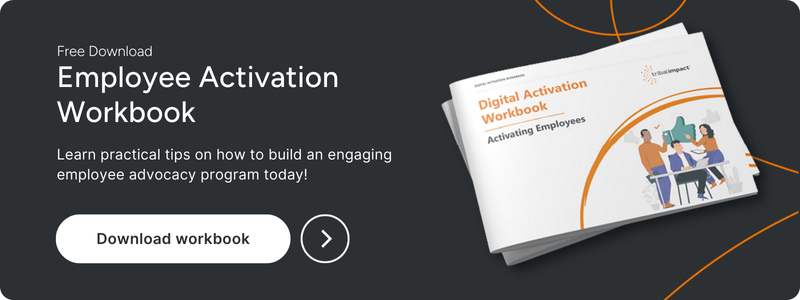
Managing an employee advocacy programme is a complex task.
Amongst various things, it involves persuading your employees to join the programme, teaching them the behaviours they need to succeed on social media, as well as managing users and the content published on the platform.
In this blog post, we’re going to explore the challenges relating to content management.
How Much Content Should You Add To Your Employee Advocacy Platform?
How much content you add to your platform really depends on the size of your programme and the platform you use. Some have limits depending on the package you purchase.
One thing to consider is how many people are responsible for adding content to the platform.
If one person oversees adding content, this can be incredibly time consuming. It also isn’t scalable.
Instead, consider recruiting channel managers and/or content curators from each group/region/country to help with the process.
If you also open it up so that advocates can suggest content, you can expect around 5-15% of those to suggest posts, too. This gives you much more variety and means the content in the platform is more likely to resonate with advocates’ audiences.
When you get to a certain number of users, channel managers are key to managing it.
If you happen to see an article that you think someone should share, you could also add it to the platform, then email them and tell them so that they don’t miss it.
How To Select Content Curators For Your Employee Advocacy Platform
Before recruiting employees to become content curators, set up different groups based on regions, countries, sectors, or verticals in your platform.
The beauty of a platform that allows you to do this is that you can have different people run different groups. These channel managers can then sort through the content that’s submitted (and submit some themselves).
It’s important to give them additional training for this role because they’ll need to understand what types of content should be internal or external, and what will appeal to the company’s audience. They need to understand what could be too sensitive to share and what type of content is unnecessary.
For example, that article on the latest football drama has no place in an advocacy platform unless you’re part of a football-related business. Then, it would make sense to share it.
Without enough channel managers, irrelevant content like this could slip through. But with channel managers focused on particular areas or groups, they can dive deeper across the platform.
Some internal content, like analyses or corporate reports might be worth sharing internally, but it’s also not going to be interesting to your audience.
Dividing and conquering with the help of channel managers means that you can go faster, go together, and go far.
How To Measure The Success Of Your Employee Advocacy Content
It’s really important to rely on more than just what dashboards show you. You need to go deeper to really understand the data. Especially as the content employees share might be different to the content their network engages with, and that may be different to what that same network clicks on to read more about.
If you structure metrics like that, you’ll see what employees are interested in sharing, what their network wants to engage with, and what their network wants to learn more about. You don’t get that out of dashboards.
Metrics should be a part of the platform you use – you need to be able to dig into that.
Also, tag what’s branded and what isn’t so that you can see how those two types of content perform. Do they get more or less engagement? You can learn a lot about those just from the tags.
This information will also help you assess the success of different types of content. Are short videos clips doing well? Are PDF reports falling flat when you share them to an engaged audience? All these little learnings beyond ‘how is my platform doing?’ will help your programme to be successful.
Even if you’re selling to a B2B audience, you’re still selling to people. Give them the right content – content that’s of interest to them – and they’ll engage with it.
Conclusion
Managing the content on your employee advocacy platform starts with training. Employees need to understand why they should join the programme, how to use the platform and how to use social media efficiently.
Adding in channel managers and content creators means you can divide and conquer, adding more location or topic specific content that can be checked before it’s listed for employees to share with their audience.
Always remember to track the success of your content, too. That way, you can find out what’s working and what isn’t – and double down on what is.
Having a well-planned content management strategy for your employee advocacy platform is key to maintaining high-level of engagement both in terms of your platform users as well as the audience that digest it. Do it well and your programme will be one step closer to a success.

